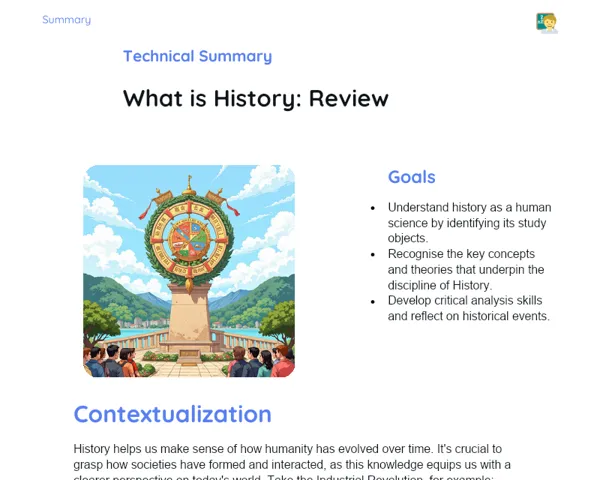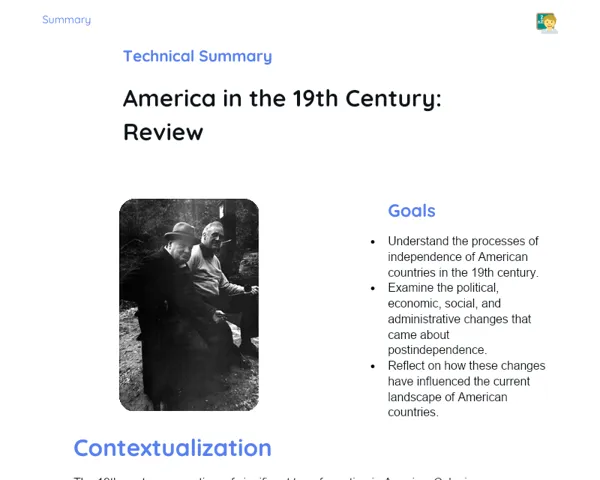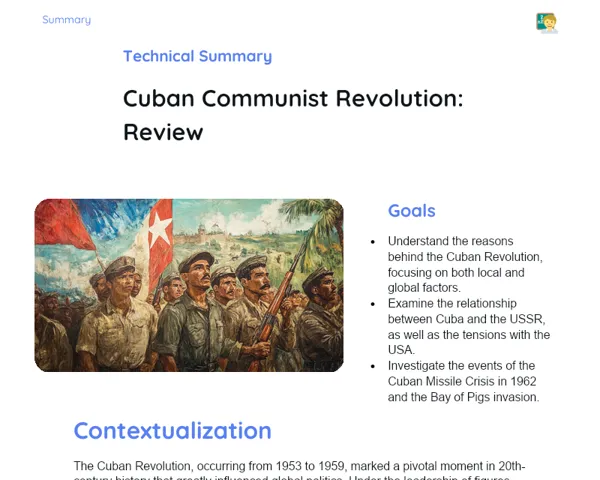Goals
1. Identify the establishment of dictatorial regimes in Latin America during the 20th century.
2. Examine the key characteristics of these regimes, particularly focusing on social and political control.
3. Contextualise the effects of dictatorial regimes on today’s society.
Contextualization
The dictatorial regimes that emerged across Latin America in the 20th century have left lasting scars on the history and collective memory of the region. From Brazil to Chile, and including Argentina and Uruguay, these dictatorships enforced rigid control over their societies, suppressing civil and political rights while persecuting dissenters. A pertinent example is the military dictatorship in Brazil (1964-1985), characterized by such extensive censorship that song lyrics and theatre scripts had to be government-approved before public release. Understanding this tumultuous period is crucial for making sense of current political and social dynamics, as well as for recognizing the significance of democracy and human rights.
Subject Relevance
To Remember!
Formation of Dictatorial Regimes
Dictatorial regimes in Latin America took shape in the 20th century as a reaction to political instability, economic crises, and external pressures. These governments frequently seized power through military coups, often backed by affluent elites and, in some instances, foreign powers eager to align the region with their geopolitical agendas.
-
Military Coups: Navigated as a method to assume control, typically during political upheaval.
-
Support from Elites: Wealthy elites frequently lent their backing to dictatorial regimes to protect their interests.
-
External Influence: Countries like the United States significantly impacted the rise or establishment of these dictatorships.
Social and Political Control
The dictatorial regimes in Latin America leveraged various means to sustain social and political control, including censorship, repression, propaganda, and surveillance. These tactics aimed to silence opposition, regulate information flow, and maintain stringent oversight of the populace, thwarting any potential acts of resistance or dissent.
-
Censorship: Rigid control over media, arts, and literature.
-
Repression: Deployment of military and police forces to pursue and eliminate adversaries.
-
Propaganda: Spread of regime ideologies to validate its authority.
-
Surveillance: Ongoing monitoring of the populace to pinpoint and nullify threats to the regime.
Impact on Contemporary Society
The legacy left by dictatorial regimes in Latin America continues to shape contemporary society. Consequences include social trauma, violations of human rights, ongoing inequalities, and a collective memory marked by periods of autocracy. These regimes also influenced the political culture and institutional frameworks of the affected nations.
-
Social Trauma: Scars left by repression and state violence.
-
Human Rights Violations: Systematic mistreatment of opponents and ordinary citizens.
-
Persistent Inequalities: Economic and social disparities exacerbated during the dictatorships.
-
Collective Memory: The significance of remembering and reflecting on these eras to prevent repeating past mistakes.
Practical Applications
-
Journalism: Journalists apply their knowledge of dictatorial regimes to provide context for news reports, particularly concerning human rights and freedom of expression.
-
Law: Lawyers and human rights advocates leverage this knowledge in their advocacy for rights violations, using historical examples to argue for social justice.
-
Social Sciences: Researchers and academics explore the long-lasting ramifications of dictatorial regimes on the social, political, and economic fabric of countries, aiding in the cultivation of a more informed and discerning society.
Key Terms
-
Dictatorship: A type of authoritarian governance where power is amassed in a single leader or group.
-
Censorship: Regulation and suppression of information, viewpoints, and cultural expressions by the government.
-
Repression: Employment of force and intimidation to quash political and social opposition.
-
Propaganda: Dissemination of information or ideas to further government interests.
-
Surveillance: Continuous monitoring of the populace to identify and eliminate threats to the regime.
Questions for Reflections
-
How did dictatorial regimes manage to maintain political and social control for so long, despite popular resistance?
-
What similarities can be identified between dictatorial regimes in Latin America and other historical or contemporary situations?
-
How can understanding dictatorial regimes help in promoting democracy and human rights in today's world?
Investigating the Impact of Dictatorial Regimes
This mini-challenge seeks to deepen understanding of the ways dictatorial regimes influenced various facets of society. You will explore a specific incident of censorship or repression during a Latin American dictatorial regime and reflect on its ramifications.
Instructions
-
Select a country and a specific period of dictatorial rule in Latin America.
-
Investigate a specific instance of censorship or repression that occurred during that time.
-
Detail the case, including who the victims were, governmental actions, and the immediate and long-term consequences for society.
-
Reflect on how this specific case exemplifies the mechanisms of social and political control discussed in class.
-
Compose a brief analysis (1-2 pages) summarising your findings and reflections, utilising reliable sources to support your arguments.



